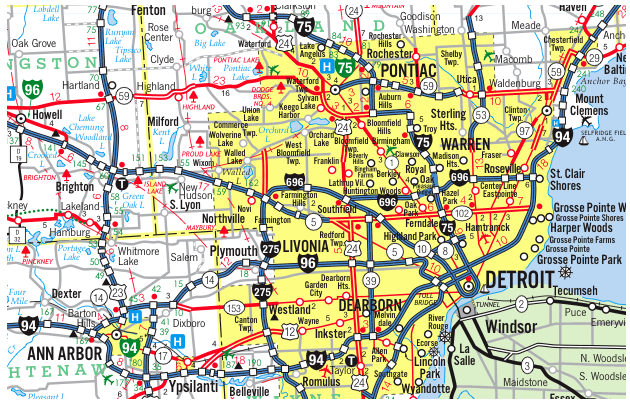Should You Put Door Hinges on the Door Frame First or on the Door?
When installing a door, the question of whether to attach the hinges to the door frame first or to the door itself can be a common point of confusion. Both methods have their pros and cons, but the correct approach depends on factors such as the type of door, the tools you have on hand, and the layout of your workspace. In this article, we’ll break down both options, providing a deeper understanding of the pros and cons so you can make an informed decision for your next door installation project.
1. Hinges on the Door Frame First: The Traditional Approach
The traditional method for installing door hinges is to attach them to the door frame first. This approach has been a standard for many years and is widely used by professionals.
Why this method works:
- Accurate placement: When you attach the hinges to the door frame, it is easier to ensure that the hinges are aligned with the door frame’s jambs and that the door swings smoothly. The frame is a fixed, rigid structure, which can make the positioning more precise.
- Easier to measure door swing: After the hinges are on the frame, you can simply place the door in position, which gives you a better understanding of how the door will swing. You can make adjustments more easily if needed before installing the hinges on the door.
- Steady placement: A door frame generally offers a more stable and secure platform, reducing the likelihood of errors due to the door shifting while trying to mark and attach the hinges.
Step-by-step process for installing hinges on the frame first:
- Mark the hinge locations on the door frame. Ensure they are positioned at the correct height and alignment.
- Mortise out the hinge recesses in the door frame using a chisel or router.
- Attach the hinges to the door frame.
- Position the door onto the hinges and check for fit and clearance.
- Mark the hinge locations on the door and mortise out the recesses in the door.
- Attach the hinges to the door, securing the door in place.
2. Hinges on the Door First: A Practical Alternative
While attaching hinges to the frame first is a common approach, some carpenters prefer to attach the hinges to the door itself first, especially for certain types of installations.
Why you might prefer this method:
- Convenience: This method allows you to move and position the door more easily without needing a fixed frame. If you’re working with a heavy door or if you’re installing multiple doors, placing the hinges on the door first allows for more mobility and flexibility.
- Self-supporting: When you attach the hinges to the door first, you can often work on the door without needing the frame in place. This is particularly useful in situations where the door frame is not yet installed or you need to adjust the frame after mounting the door.
- Flexibility in door fitting: This method can be particularly useful when fitting doors to non-standard or uneven frames. By mounting the hinges on the door first, you may have a better ability to make fine adjustments in the frame afterward.
Step-by-step process for installing hinges on the door first:
- Attach the hinges to the door in the desired positions, ensuring they are evenly spaced and aligned.
- Mark the hinge positions on the door frame.
- Mortise the hinge recesses in the door frame.
- Secure the door to the frame, adjusting as necessary for a good fit.
3. Factors to Consider When Choosing the Right Approach
- The Type of Door and Frame:
- For solid doors, it may be easier to start with the frame as a support structure, especially if the door is heavy.
- For hollow-core doors, placing the hinges on the door first might be simpler since the frame isn’t as crucial for supporting the weight of the door.
- If your frame is made of a material like drywall or a non-wood material, attaching the hinges to the door first can offer more flexibility.
- The Tools Available:
- If you have access to a hinge template and a router, placing the hinges on the frame might be easier, as these tools provide a high level of accuracy.
- If you’re working with basic hand tools or don’t have a way to secure the frame, putting the hinges on the door first allows you to work on the door independently.
- Accuracy and Precision:
- If you’re concerned about the precise placement of the hinges, the door frame method may be more forgiving since the frame is fixed in place.
- With the door method, it might be a bit more challenging to achieve perfect alignment, but with care and careful measurements, it’s entirely possible.
- The Number of Doors Being Installed:
- If you’re installing multiple doors, putting hinges on the frame first is usually the most efficient. It allows for a repeatable process and helps maintain consistency across all doors.
- For a single, custom installation, you may prefer putting the hinges on the door first for more flexibility.
Conclusion
In the end, whether you choose to attach the hinges to the door frame first or the door itself will depend on your specific project and available resources. Both methods have their advantages, but the frame-first approach tends to be the most common for traditional installations due to its accuracy and stability. However, if you’re dealing with a custom door, non-standard frame, or want more flexibility during the installation, attaching the hinges to the door first could be the best choice.
Take your time to assess your project, and whichever approach you choose, make sure to measure carefully and ensure your hinges are positioned correctly to ensure your door operates smoothly. Happy installing!




 Our Construction company is Servicing Southeast Michigan, Detroit and the Tri-County area Wyane, Oakland and Macomb;
Our Construction company is Servicing Southeast Michigan, Detroit and the Tri-County area Wyane, Oakland and Macomb;
